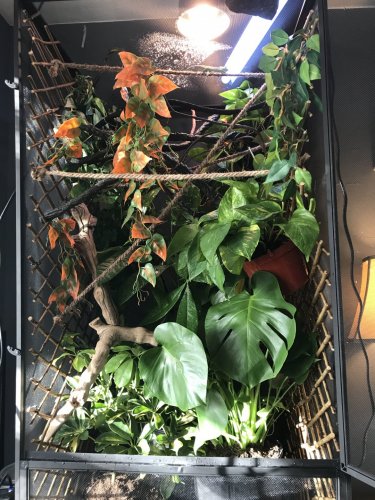Your female is already showing her adult mature colors so she could produce eggs soon. You need an opaque container at least 12" deep x 12" x 8" filled with moist washed playsand IN her cage at all times now.
For females you have to be careful not to constantly overfeed them or you'll make them lay big clutches and she could develop MBD and other health issues and have trouble laying the eggs.
Why don't you answer the questions in the how to ask for help thread near the top of the health forum so we can see if everything is ok?
Here's the link....
https://www.chameleonforums.com/threads/how-to-ask-for-help.66/
For females you have to be careful not to constantly overfeed them or you'll make them lay big clutches and she could develop MBD and other health issues and have trouble laying the eggs.
Why don't you answer the questions in the how to ask for help thread near the top of the health forum so we can see if everything is ok?
Here's the link....
https://www.chameleonforums.com/threads/how-to-ask-for-help.66/


